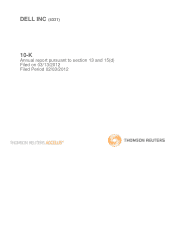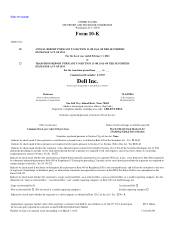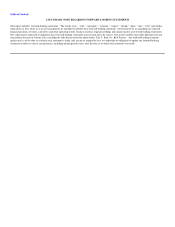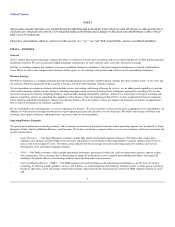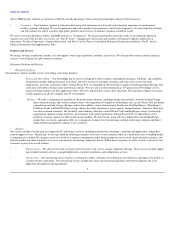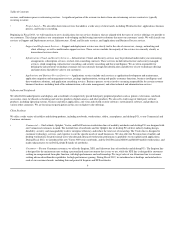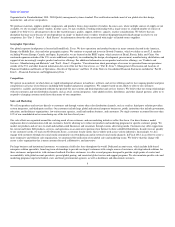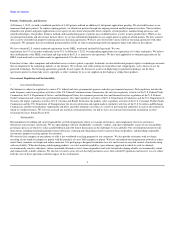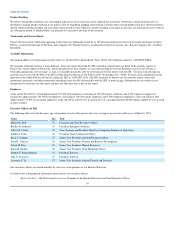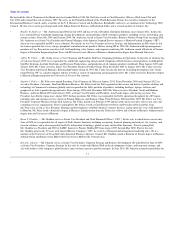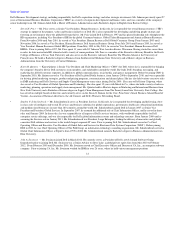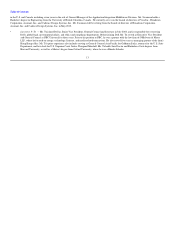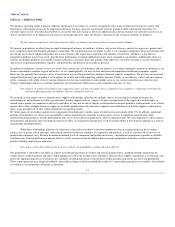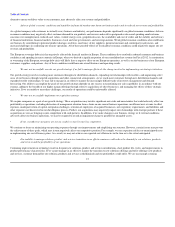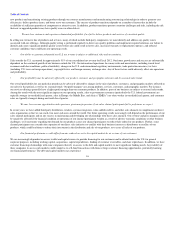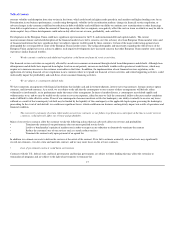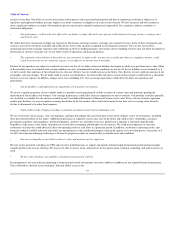Dell 2011 Annual Report Download - page 11
Download and view the complete annual report
Please find page 11 of the 2011 Dell annual report below. You can navigate through the pages in the report by either clicking on the pages listed below, or by using the keyword search tool below to find specific information within the annual report.
Table of Contents
Patents, Trademarks, and Licenses
At February 3, 2012, we held a worldwide portfolio of 3,449 patents and had an additional 1,660 patent applications pending. We also hold licenses to use
numerous third-party patents. To replace expiring patents, we obtain new patents through our ongoing research and development activities. The inventions
claimed in our patents and patent applications cover aspects of our current and possible future computer system products, manufacturing processes, and
related technologies. Our product, business method, and manufacturing process patents may establish barriers to entry in many product lines. While we use
our patented inventions and also license them to others, we are not substantially dependent on any single patent or group of related patents. We have entered
into a variety of intellectual property licensing and cross-licensing agreements. We have also entered into various software licensing agreements with other
companies. We anticipate that our worldwide patent portfolio will be of value in negotiating intellectual property rights with others in the industry.
We have obtained U.S. federal trademark registration for the DELL word mark and the Dell logo mark. We own
registrations for 107 of our other trademarks in the U.S. At February 3, 2012, we had pending applications for registration of 14 other trademarks. We believe
that establishment of the DELL word mark and logo mark in the U.S. is material to our operations. We have also applied for or obtained registration of the
DELL word mark and several other marks in approximately 183 other countries.
From time to time, other companies and individuals assert exclusive patent, copyright, trademark, or other intellectual property rights to technologies or marks
that are important to the technology industry or our business. We evaluate each claim relating to our products and, if appropriate, seek a license to use the
protected technology. The licensing agreements generally do not require the licensor to assist us in duplicating its patented technology, nor do these
agreements protect us from trade secret, copyright, or other violations by us or our suppliers in developing or selling these products.
Government Regulation and Sustainability
•Government Regulation
Our business is subject to regulation by various U.S. federal and state governmental agencies and other governmental agencies. Such regulation includes the
radio frequency emission regulatory activities of the U.S. Federal Communications Commission; the anti-trust regulatory activities of the U.S. Federal Trade
Commission, the U.S. Department of Justice, and the European Union; the consumer protection laws and financial services regulations of the U.S. Federal
Trade Commission and various state governmental agencies; the export regulatory activities of the U.S. Department of Commerce and the U.S. Department of
Treasury; the import regulatory activities of U.S. Customs and Border Protection; the product safety regulatory activities of the U.S. Consumer Product Safety
Commission and the U.S. Department of Transportation; the investor protection and capital markets regulatory activities of the U.S. Securities and Exchange
Commission; and the environmental, employment and labor, and other regulatory activities of a variety of governmental authorities in each of the countries in
which we conduct business. We were not assessed any material environmental fines, nor did we have any material environmental remediation or other
environmental costs, during Fiscal 2012.
•Sustainability
Environmental stewardship and social responsibility are both integral parts of how we manage our business, and complement our focus on business
efficiencies and customer satisfaction. We use open dialogue with our stockholders, customers, vendors, and other stakeholders as part of our sustainability
governance process in which we solicit candid feedback and offer honest discussions on the challenges we face globally. Our environmental initiatives take
many forms, including maximizing product energy efficiency, reducing and eliminating sensitive materials from our products, and providing responsible,
convenient computer recycling options for customers.
We were the first company in our industry to offer a free worldwide recycling program for our consumers. We also provide consumers with no-charge
recycling of any brand of computer or printer with the purchase of a new Dell computer or printer. We have streamlined our transportation network to reduce
transit times, minimize air freight and reduce emissions. Our packaging is designed to minimize box size and to increase recycled content of materials along
with recyclability. When developing and designing products, we select materials guided by a precautionary approach in which we seek to eliminate
environmentally sensitive substances (where reasonable alternatives exist) from our products and work towards developing reliable, environmentally sound,
and commercially scalable solutions. We also have created a series of tools that help customers assess their current IT operations and uncover ways to reduce
both the costs of those operations and their impact on the environment.
9

